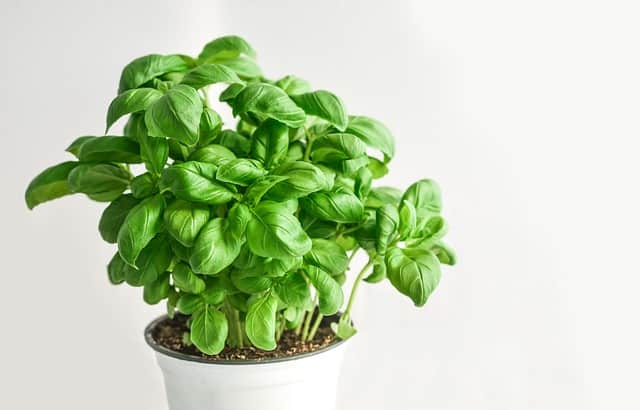Basil is a popular herb that is used in many dishes around the world. However, if you notice black spots on your basil leaves, it could be an indication of a problem. If your basil leaves have black spots, it’s because of various factors, such as cold temperatures, fungal or bacterial infections, insect attacks, or nutrient deficiencies.
Identifying the cause of black spots on basil leaves is crucial to preventing further damage to your basil plant. In this article, we will discuss the common causes of black spots on basil leaves, treatment and prevention methods, and how to recover your basil plant.
By understanding the causes and solutions to black spots on basil leaves, you can ensure that your basil plant stays healthy and continues to thrive.
Key Takeaways
- Black spots on basil leaves can be caused by a variety of factors, including cold temperatures, fungal or bacterial infections, insect attacks, or nutrient deficiencies.
- Identifying the cause of black spots is crucial to preventing further damage to your basil plant.
- By understanding the causes and solutions to black spots on basil leaves, you can ensure that your basil plant stays healthy and continues to thrive.
Check out these other related posts:
- Black Spots on Yucca Leaves:
- Black Spots on Weeping Willow Leaves
- Black Spots on Weeping Willow Leaves
Identifying Black Spots on Basil Leaves
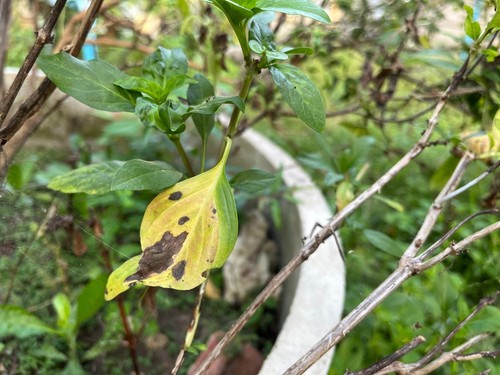
Basil plants are known for their fragrant leaves and are commonly used in cooking. However, black spots on basil leaves can be an indication of underlying problems. Identifying the cause of the black spots is essential to prevent further damage to the plant.
1. Signs of Fungal and Bacterial Diseases
Fungal and bacterial infections are common causes of black spots on basil leaves. Signs of fungal diseases include black or brown spots that appear on the leaves. Fungi such as Cercospora leaf spot, Septoria fungi, and Peronospora belbahrii can cause black spots on basil leaves.
Bacterial infections such as bacterial leaf spot caused by Pseudomonas cichorii can also cause black spots on the leaves.
2. Insect Infestation Indicators
Insects such as leaf miners can cause black spots on basil leaves. Leaf miners are pests that feed on the leaves of the plant and leave blotch leaf miners on the leaves. Signs of pest infestation include holes in the leaves and brown spots.
3. Effects of Temperature and Humidity
Temperature and humidity can also cause black spots on basil leaves. Frost damage caused by exposure to low temperatures can cause black spots on the edges and tips of the leaves. High humidity can lead to fungal infections such as downy mildew.
Identifying the cause of the black spots is crucial to prevent further damage to the plant. By examining the leaves and identifying signs of fungal or bacterial infections, insect infestations, or effects of temperature and humidity, the underlying problem can be addressed.
Basil Leaves Have Black Spots – 3 Common Problems
Basil is a popular herb that is used in various culinary dishes. However, black spots on basil leaves can be a common problem that affects its growth and quality. There are several factors that can cause black spots on basil leaves. In this section, we will discuss the most common causes of black spots on basil leaves.
1. Impact of Poor Nutrition
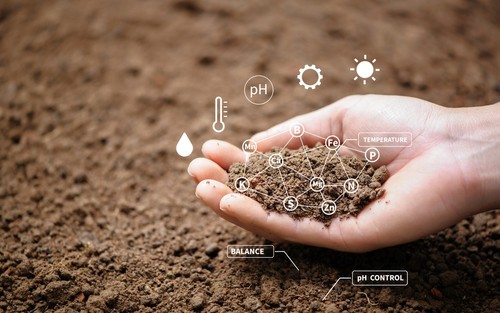
Poor nutrition is one of the most common causes of black spots on basil leaves. Nutrient deficiencies, especially nitrogen deficiency, can cause the leaves to turn yellow and develop black spots. To prevent this, it is important to provide the plant with adequate nutrition. Organic compost and manure can be used to improve the soil’s nutrient content.
2. Role of Soil and Watering Conditions
Soil and watering conditions can also play a significant role in the development of black spots on basil leaves. Basil requires moist soil, but overwatering can cause the roots to rot and the leaves to develop black spots.
On the other hand, underwatering can cause the leaves to dry out and develop black spots. It is important to maintain a balance between soil moisture and watering frequency.
3. Influence of Indoor and Outdoor Environment
The indoor and outdoor environment can also affect the growth of basil and cause black spots on its leaves. Indoor gardening can lead to poor air circulation, which can create a humid environment that promotes fungal growth.
Subfreezing temperatures can also damage the plant and cause black spots on the leaves. Outdoor basil plants can be affected by temperature changes, harsh sunlight, and extreme weather conditions.
Treatment and Prevention Methods
1. Using Neem Oil and Other Treatments
One of the most effective ways to treat black spots on basil leaves is to use neem oil, a natural pesticide that can control fungal and bacterial infections. To use neem oil, mix 2 tablespoons of oil with 1 gallon of water and spray the solution on the leaves and stems of the basil plant.
Repeat the process every 7 to 14 days until the black spots disappear. Other treatments that can be used include copper fungicide, which can also control fungal infections.
2. Proper Watering and Sunlight Exposure
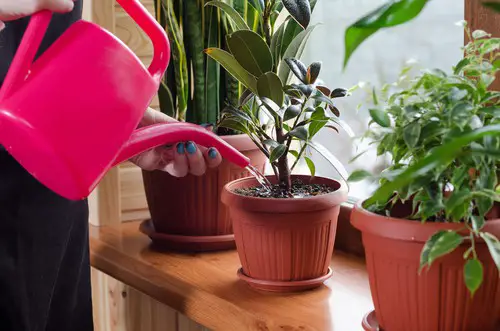
Proper watering and sunlight exposure are crucial to preventing black spots on basil leaves. Overwatering can lead to root rot, which can cause the leaves to turn black. On the other hand, underwatering can cause the leaves to wilt and turn black.
To prevent these issues, water the basil plant deeply once a week, and make sure the soil is well-draining. Additionally, basil plants need at least 6 hours of sunlight per day, so make sure to place them in a sunny location.
3. Nutrient Management and Soil Care
Nutrient management and soil care are also important in preventing black spots on basil leaves. Basil plants need nitrogen-rich soil to grow properly, so make sure to fertilize them every 4 to 6 weeks with a balanced fertilizer.
Additionally, adding a layer of mulch around the base of the plant can help retain moisture and prevent the soil from drying out too quickly.
It is safe to eat basil with black spots, but it is best to remove the affected leaves before consuming. With proper treatment and prevention methods, black spots on basil leaves can be controlled and prevented, allowing for a healthy and thriving plant.
Recovering Your Basil Plant
If you notice black spots on your basil leaves, don’t panic. There are ways to recover your plant and get it back to health. Here are some tips to help you recover your basil plant from cold and frost damage, insect and disease damage.
Dealing with Cold and Frost Damage
If your basil plant has been exposed to cold temperatures or early frost, it can cause damage to the leaves. The leaves may turn black or brown, and the plant may wilt. To recover your basil plant, you need to remove the damaged leaves.
If the damage is severe, you may need to cut the entire plant back to the soil level. Once you have removed the damaged leaves, you should cover the plant with a cloth or blanket to protect it from further frost damage.
To prevent future frost damage, you can harden off your basil plant before planting it outside. This means gradually exposing it to outdoor conditions over a period of time before planting it in the ground.
Managing Insect and Disease Damage
Insect and disease damage can also cause black spots on basil leaves. If you see eggs or insects on the leaves, you can remove them by hand or use an insecticidal soap.
Fungal and bacterial infections can also cause black spots on basil leaves. To manage these infections, you can use a fungicide or bactericide. Be sure to follow the instructions carefully and apply the product as directed.
In addition, make sure your basil plant is getting the right amount of nutrients. Nutrient deficiencies can weaken the plant and make it more susceptible to disease and insect damage.
By following these tips, you can recover your basil plant from damage and keep it healthy.
Conclusion
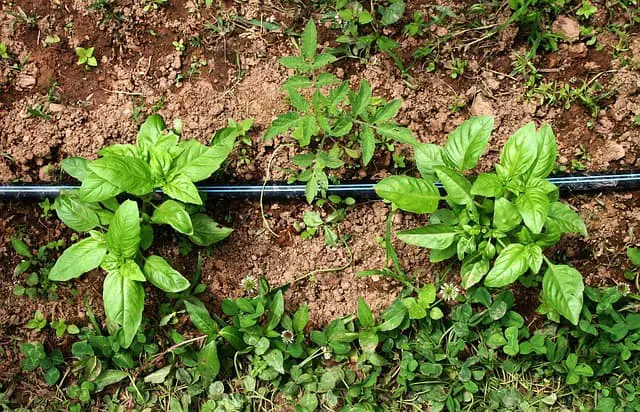
In conclusion, black spots on basil leaves can be caused by a variety of culprits, including fungal diseases like Fusarium wilt and Downy mildew, harsh sun exposure, temperature damage, and overwatering.
To prevent black spots on basil, it is important to provide the plant with the right growing conditions, including well-draining soil, adequate sunlight, and proper watering.
Basil is a delicious herb that is commonly used in many cuisines around the world. It is important to keep the plant healthy to ensure that it produces flavorful leaves. Black spots on basil leaves can be a sign of blight or other diseases that can affect the plant’s growth and flavor.
To keep basil plants healthy, it is important to regularly inspect the leaves for signs of black spots and other issues. If black spots are detected, it is important to take action quickly to prevent the spread of disease. This may include removing affected leaves, adjusting the plant’s growing conditions, or using fungicides or other treatments.
Overall, black spots on basil leaves can be a frustrating problem for gardeners and cooks alike. However, with the right care and attention, it is possible to keep basil plants healthy and productive, and to enjoy delicious, flavorful leaves throughout the growing season.
Frequently Asked Questions
Are black-spotted basil leaves safe to eat?
Black-spotted basil leaves are generally safe to eat, but it is recommended to remove the spotted leaves before consuming the basil. The black spots may indicate the presence of fungal or bacterial infections, which can affect the flavor and texture of the basil.
How can black spots on basil leaves be treated?
The treatment for black spots on basil leaves depends on the cause of the spots. If the spots are caused by fungal or bacterial infections, the affected leaves should be removed and destroyed to prevent the spread of the infection.
If the spots are caused by nutrient deficiencies, the plant should be fertilized with a balanced fertilizer. Additionally, it is recommended to avoid overwatering the plant, as this can lead to root rot and other fungal infections.
Why are my basil leaves turning black on the edges?
Basil leaves may turn black on the edges due to environmental factors such as cold temperatures, harsh sun exposure, or insect attacks. Nutrient deficiencies and fungal or bacterial infections can also cause black spots on the edges of basil leaves.
How can I prevent basil leaves from turning black in the fridge?
To prevent basil leaves from turning black in the fridge, it is recommended to store them in an airtight container or plastic bag with a damp paper towel. This will help to maintain the moisture levels and prevent the leaves from drying out.
What is downy mildew on basil?
Downy mildew is a fungal disease that affects basil plants. It appears as yellow or brown spots on the leaves, which may eventually turn black. The disease is caused by a fungus that thrives in humid conditions, and it can be prevented by ensuring proper air circulation and avoiding overwatering.
What causes black fungus to grow on basil leaves?
Black fungus on basil leaves is usually caused by fungal infections such as downy mildew or powdery mildew. The fungus thrives in humid conditions and can spread quickly if left untreated. It is recommended to remove the affected leaves and treat the plant with a fungicide to prevent the spread of the infection.

Hey, I’m Lisa and I’ve been an avid gardener for over 30 years. I love writing, talking and living in the garden! Feel free to connect with me on my socials below

